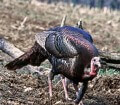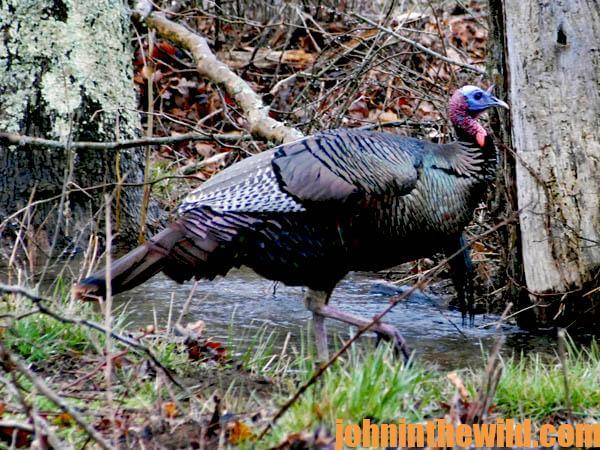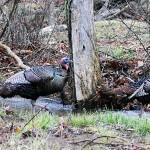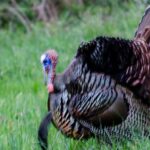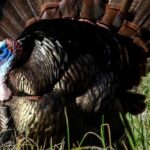John’s Note: Not knowing the typical set-up for hunting turkeys is one of the problems that a novice hunter has. He attempts to get too close to the turkey, and the result is that the bird spots the hunter and moves-out of that region well before the hunter even tries to call to him. Most often this happens when a turkey gobbles in the direction of a hunter, turns-around on the limb, faces the opposite direction and gobbles away from the hunter. The bird then sounds farther away than he actually is. A good rule of thumb is to always set-up farther away from the bird than you think you should.
One of the hardest gobblers to set-up on and call to is the gobbler with hens.
This gobbler already has what he’s looking for and is reluctant to leave his harem just to meet and mate with a new lady friend. Probably the first few times you call, he won’t come. But if you continue to call, his curiosity may get the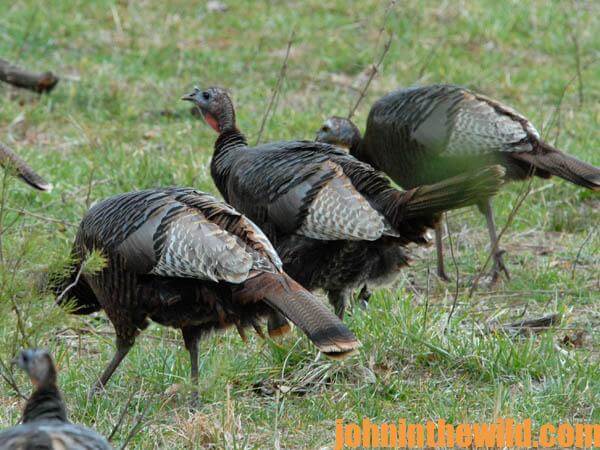 best of him. A hunter can use three tactics to take this gobbler.
best of him. A hunter can use three tactics to take this gobbler.
- Follow the gobbler through the woods as he moves with his hens. Stay out of sight, but continue to call to the gobbler using loud, demanding calls. Often, a gobbler will leave his hens or encourage his hens to walk with him to find the hunter he assumes to be another hen.
- Forget trying to talk to the gobbler, and instead talk directly to the boss hen. When you start giving a demanding call, the boss hen may answer your call as if to say, “This is my gobbler. You leave him alone.” That’s the time to forget about trying to talk to the gobbler and instead talk directly to the boss hen. Attempt to intimidate the boss hen and cause her to become so angry that she’ll come over to investigate the hen that’s doing all the aggressive calling to her gobbler. When she comes hunting the caller, she’ll usually bring the harem of hens with her, and the tom should accompany her. Let the boss hen walk past without seeing you. The other hens will come into the area and so will the gobbler. When you get ready to make the shot, remember that more than one set of eyes are watching for movement. Numerous gobblers have been killed by hunters who have called to the boss hen and then have waited for the gobbler to follow.
- Talk with both the hen and the gobbler. If the boss hen is ready to be bred, she may answer your aggressive calling but not leave the gobbler to investigate. When the hen calls, call back aggressively. The instant the tom quits gobbling, start calling to him. If you want to talk to both, each time one of them calls, call back, a practice that should excite either the hen or the gobbler. If the boss hen won’t leave the gobbler, the longbeard usually will herd the boss hen over to the hunter.
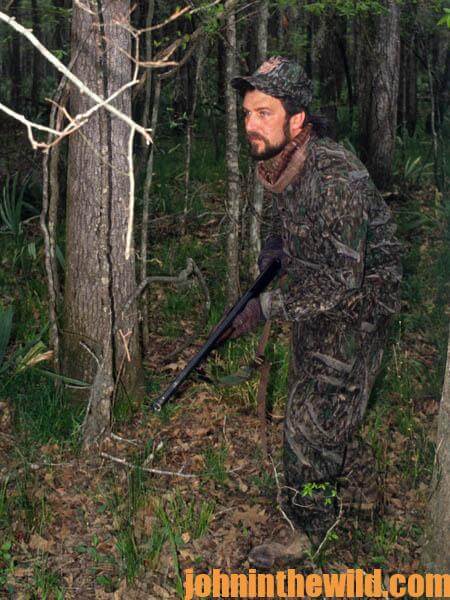 How to Set-Up on Walking and Talking Gobblers:
How to Set-Up on Walking and Talking Gobblers:
There’s nothing more frustrating than to find a good gobbling bird, call to him and then listen to him walk off. In many instances, these turkeys are call-shy, because they’ve listened to so-much calling from other hunters that they know what a turkey call sounds like and don’t want any part of it. Or, maybe walking and talking gobblers just don’t like hens. They’ll gobble well but won’t come to calling. Two methods will help you bag one of these walking and talking gobblers.
- Circle the gobbler, and take a stand in the woods where you think the turkey is going. Don’t call to the turkey anymore, and the tom should come in silently. For some people, this is a boring way to hunt, but this technique can be successful.
- Use two hunters. The first hunter takes a stand close to where the turkey’s gobbling and then calls to the tom, just enough to keep the bird gobbling. The other hunter circles the turkey, gets in front of the tom and keeps-up with his location, as the tom answers the caller. This tactic too will pay gobbler dividends.
John E. Phillips kindle book “The Turkey Hunter’s Bible,” “Click here to get this book.”
About the Author
John Phillips, winner of the 2012 Homer Circle Fishing Award for outstanding fishing writer by the American Sportfishing Association (AMA) and the Professional Outdoor Media Association (POMA), the 2008 Crossbow Communicator of the year and the 2007 Legendary Communicator chosen for induction into the National Fresh Water Hall of Fame, is a freelance writer (over 6,000 magazine articles for about 100 magazines and several thousand newspaper columns published), magazine editor, photographer for print media as well as industry catalogues (over 25,000 photos published), lecturer, outdoor consultant, marketing consultant, book author and daily internet content provider with an overview of the outdoors.

